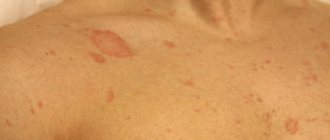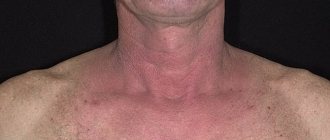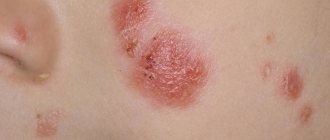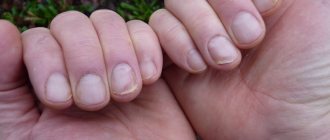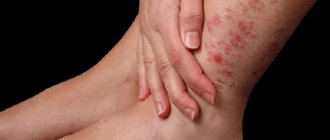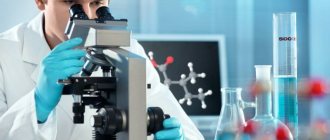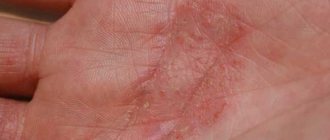Psoriasis is a complex systemic disease. Scientists have not yet found an exact answer to the question of why psoriasis occurs. Whether it spreads from person to person is another popular question. Although the disease does not look at all aesthetically pleasing, there should be no concern about its contagiousness.
Patients often have complexes, since many people try to avoid those whose skin they see any changes for fear of getting infected. This disease is often confused with other diseases, which is why such hostility arises. It is similar to other, contagious diseases. The factors behind its appearance are different, as are the methods of transmission.
How is psoriasis transmitted?
Although there is no clear answer about the causes of the pathology, there is an accurate version that psoriasis is not transmitted by contact. There is no danger of contracting the disease. However, there is scientific evidence that the pathology is inherited.
It occurs as a result of a malfunction of the immune system - it is an autoimmune disease. It can appear in any person, regardless of gender or age. There is a certain genetic predisposition. However, the pathology has been little studied, so scientists do not give an absolute guarantee regarding its transmission.
There are families in which both parents and other close relatives have this pathology in their anamnesis, and children are born absolutely healthy. Members of the same family, one of whom has this pathology, do not have to be afraid to use the same dishes, towels and bed linen. With physical contact with the patient or household items, there is no risk of other family members getting sick. When caring for a patient, there is also no risk of getting sick.
| Transmitted | Not getting through |
| Genetic factor | Contact path |
| Due to an infection such as streptococcus | Domestic |
| Through the blood |
Methods of transmission of psoriasis
To dispel the doubts of people with psoriasis and those around them, you can consult a dermatologist, but psoriasis is not contagious and is not transmitted to a healthy person in the following ways:
- Airborne if an object with signs of psoriasis sneezes or coughs.
- Through a handshake, if there are psoriatic-type rashes on the hands.
- Through saliva when kissing or using the same cup, spoon, plate. Even a mother cannot infect a child by showing affection if he did not receive the gene with the code for this disease during intrauterine development.
- Psoriasis is not a reason to refuse intimate relationships and start a family. The disease is not transmitted to the partner in any way. Only children born in such a union are at risk. But if you follow the recommendations of your doctor, you can minimize the negative consequences. Psoriasis can appear after several generations or go dormant for many years if there is no provoking factor.
Psoriasis is transmitted only at the genetic level and is a hereditary pathology. You should not avoid communicating with people with psoriasis and classify them as outcasts, which is important for groups of people who are not educated in medical matters. There were times when others were wary of even people diagnosed with diabetes, until accessible information about the pathology became available. And the same is true with psoriasis.
Is psoriasis transmitted from person to person?
The external manifestations of the disease are not very aesthetic, so people try to avoid people who have any rashes on their skin. The disease manifests itself in the form of scales, itching and flaking of the skin. Outwardly, it is similar to a lot of other diseases, including contagious ones, for example, lichen.
However, this defect is cosmetic. The patient does not cause any harm to others. The disease is not transmitted by contact. The routes of transmission of psoriasis are different, but you cannot become infected with it through contact.
As a result of genetic predisposition or as a result of a malfunction of the nervous and immune systems, a person can acquire a pathology. It is not transmitted through contact with a sick person.
The following routes of disease transmission are excluded:
- contact;
- domestic;
- during sexual intercourse;
- through blood;
- through saliva;
There is no absolute opinion about the occurrence of the disease, but there is a guarantee that it is not transmitted from person to person.
Is skin psoriasis contagious to others?
The possibility of transmission of skin psoriasis from an infected person to a healthy person is an acute issue.
The disease can pose serious threats to health and is currently classified as an incurable disease. Lichen squamosus, the second name for skin psoriasis, is a common disease.
Despite this, psoriasis is not an infectious disease, but has only external similarities with lichen.
A patient with psoriasis does not pose a danger to society; frequent contact with him and living in the same house cannot cause the development of psoriasis. The disease can occur in a person only if there is an existing predisposition and the pathology is activated against the background of any shock to the body.
Communication with a person with psoriasis can be a source of purely aesthetic discomfort. The danger of psoriasis to others is a myth that arose against the background of insufficient awareness of people about the nature of the disease.
How is psoriasis transmitted from person to person?
The appearance of the defect is associated primarily with genetic predisposition. But there is scientific evidence that suggests that a baby has a 30% chance of getting the disease if both of its parents have psoriasis. In this case, you can get sick even if both parents are healthy, but distant relatives have a history of this pathology.
Thus, it is impossible to say with certainty whether psoriasis is transmitted from person to person. Although there is a certain probability. The appearance of a defect is provoked by many factors, such as stress, illness, and viral infections. A person can get sick at any age, but after 40 years, the likelihood of the disease decreasing. Most often it affects people aged 10 to 35 years.
The occurrence of the disease is caused by various factors:
- genetics;
- allergy;
- endocrine disorders;
- malfunction of the immune system;
- frequent trauma or friction of the skin;
- virus theory;
- infectious version.
There is a version that the disease appears as a result of frequent sore throats, especially streptococcal ones. Therefore, streptococcus can be transmitted from person to person, which, according to one version, provokes the onset of the disease.
Possible complications
Late diagnosis and improper treatment of psoriasis lead to the following complications:
- Arthritis: a disease of the joints that lasts for a long time without visible manifestations. The inflammatory process leads to impaired movement, pain when walking and the slightest activity, and if it is advanced, to blood poisoning (sepsis) and forced amputation of the affected limb.
- Formation of purulent blisters (pustules). Weeping wounds appear and healthy skin becomes infected.
- Erythroderma (70% of the skin is covered with psoriatic plaques). The complication leads to a failure of the excretory and respiratory functions of the dermis and an increase in body temperature.
- Thinning and change in the shape of the nails, causing aesthetic discomfort to the patient.
- Baldness occurs due to the death of hair follicles.
Psoriasis is transmitted sexually
There are many myths about the transmission of disease from person to person. Genital psoriasis, which manifests itself as plaques and peeling on the genitals, is extremely rare. Such people develop complexes because people are afraid of contagion. Genital psoriasis is not contagious. Not transmitted by contact. However, its appearance is quite specific, so many are afraid of getting infected, despite the guarantee of its safety.
The disease can appear in any area of the human body, including the genitals. Penile psoriasis is more difficult to treat than if it occurs elsewhere, since this area is very delicate and is usually hidden under clothing. And the disease requires the use of special ointments that rub off on clothes. Therefore, treatment of psoriasis on the genitals is difficult.
It is very important not to confuse this disease with another pathology, since genital psoriasis looks similar to many other diseases. Only a dermatovenerologist can accurately diagnose. It is this specialist that you should contact if you notice peeling, itching and redness in the genital area. Psoriasis on the genitals is safe for people; it is not transmitted by contact.
The initial stage of genital psoriasis can be missed due to the coloring of the glans penis. In this area, psoriasis looks like crusts that do not go away for a long time and can increase in size, causing physical and psychological discomfort to the owner.
Psoriasis on the genitals is a fairly rare occurrence. The location of the defect may vary. It forms on the head of the penis, in the groin area, and on the scrotum. The initial stage of its appearance is characterized not only by the appearance of spots, but also by itching in this area.
As the stage progresses, the spots increase in size and become more pronounced red in color. In this area, the disease progresses very quickly, since there are many sweat glands located there, causing the plaques to become soaked and swollen. In addition, there is a danger of violating the integrity of the mucous membrane of the genital organs, since pathology provokes these changes.
The skin on the genitals is thin, therefore this type of disease brings discomfort. Some doctors believe that the defect may appear as a result of rubbing with clothing in the groin area. This is one of the factors of occurrence with an existing predisposition. Therefore, dermatologists advise men to be very careful when choosing underwear. It is necessary to choose underwear made from natural fabrics that fit snugly to the body, but do not squeeze the skin.
What kind of disease is psoriasis
The skin disease psoriasis (or scaly lichen) is a chronic disorder characterized by excessive division of cells in the upper layers of the skin, a strong inflammatory process and damage to various organs and internal human systems. The non-infectious disease affects the skin and its appendages (nails, hair). The main symptoms of psoriasis are the appearance of pinkish spots, which over time begin to peel off and cause itching. The disease is characterized by alternating exacerbation and remission.
Often, lichen forms on the elbows, knees, and scalp. Often those areas of the integument that are constantly injured or subject to friction are affected. In the case of atypical forms of psoriasis, the disease affects other places on the human body. Doctors distinguish three stages of development of lichen with peeling:
- Progressive stage. It is characterized by the formation of new rashes and severe itching.
- Stationary stage. New lichen spots with peeling do not appear, and old ones gradually heal.
- Regression. The disease practically recedes, leaving strong pigmentation on the body (at the sites of plaques the skin is darker than in healthy areas).
Is psoriasis inherited?
The pathology is chronic. The appearance is provoked by various factors, but the main one is genetic predisposition. As a result of genetic diagnostics, scientists have identified a defect in one of the genes, which is responsible for the death of a special kind of cells. With some changes in the body, these cells begin to actively work, which is why psoriatic rashes appear.
Not all people diagnosed with pathology have relatives with the same disease. Therefore, we can say that not only genetics influences its appearance, but also other factors. For example, there is a version that a streptococcal infection causes its appearance.
People suffering from pathology can donate blood if the attending physician allows it. But this is prohibited provided that the disease is in the acute stage. There is a version that you cannot get psoriasis through blood. But, since according to one version, it appears as a result of streptococcal infection, it is not recommended for such people to donate blood due to the low level of knowledge of the disease.
Forms of psoriasis and external signs
Psoriasis, like many skin changes, has several stages of the disease, which affects the specifics of therapy and the general condition of the patient. The disease can be confused with other dermatological disorders, but at the first examination, a specialist makes the correct diagnosis based on external signs:
- Redness and scales usually form in areas of flexion, where the skin is constantly in friction and is thinnest; there is a bacterial background due to poor hygiene.
- Plaques form and quickly spread throughout the body.
- A scaly layer appears on top of the inflammation as a result of the death of epidermal cells. With psoriasis, this process is accelerated several times; if, in the absence of pathologies, tissue cells die once a month, then in this case they live only 5–6 days. Unbearable itching occurs.
- Psoriasis lesions are localized singly or cover a large area of the body, for example, the back, head, elbow area.
- Pinpoint rashes similar to manifestations of a viral infection or allergy.
- Blisters (pustules) that are filled with fluid burst easily, which creates conditions for skin infection.
- Change in nail plate color and shape. Nails acquire a grayish or yellowish tint, flake and become thinner. The symptom is similar to a fungal infection of the plate.
- Pain and deformation in the joints due to the penetration of lesions into bone and cartilage tissue.
- Inflammation and peeling of the skin, as a symptom of a serious disease in a progressive stage.
Forms of psoriasis
Based on the listed signs, medicine distinguishes the following forms of psoriasis, which in no case should be considered contagious, even with a large area of damage:
- Plaque-like, or the simplest form of the initial stage;
- Folded, or atypical - lesions are located only in folds;
- In the form of a drop, the affected area is large, but the inflammation is small in the form of drops and can be confused with an allergy;
- Pustular with the formation of blisters that are filled with fluid;
- Nail form, when only the plate is affected, but can penetrate inside and affect the small joints of the hands and feet;
- The arthropathic form, when psoriasis affects bone and joint tissue, develops if the patient does not go to the hospital in a timely manner;
- The erythrodermic form is a severe skin lesion, leading to peeling and inflammation of the surface.
Plaque-like
Folding
Drop shaped
Pustular
Nail shape
Arthropathic
This disease is chronic, but can remain dormant for a long time and not cause discomfort to the patient. But any external or internal factor causes activation, for example, an allergic reaction to flowering in the spring season, puberty in adolescents, or the onset of diabetes. It is necessary to monitor your health and undergo a preventive examination and course of therapy to eliminate the severe consequences of psoriasis.
Psoriasis is transmitted by contact
The disease is not transmitted through contact, blood transfusion, or sexual contact. This is an autoimmune disease, the occurrence of which is caused by many factors. People who suffer from the disease should not fear that there is a possibility of transmitting the disease. This is wrong.
If a pathology appears in several family members at the same time or in turn, one cannot talk about its transmission as a result of contact. The cause of the appearance in this case should be determined by a dermatologist. Perhaps its appearance in this case was provoked by stress, poor nutrition of the whole family, a previous infection or acquired streptococcus, as well as other reasons.
Pathology can progress rapidly, affecting vast areas of the human body. The disease is considered fatal because if not treated promptly it can cause serious complications on the human body. The pathology affects not only the skin, but also internal organs, such as the kidneys and liver. The joints also suffer.
Severe forms of the disease are treated with hormonal drugs, mild ones - with non-hormonal drugs, herbal preparations and spa treatment. The disease is not transmitted through person-to-person contact, so we can say that a person suffering from this disease is absolutely safe for others.
Why is psoriasis dangerous?
Although psoriasis cannot be contracted, it is a very dangerous disease. It should be treated when the first symptoms appear. This disease affects the skin as well as internal organs. This is where its danger lies. If you do not complete the course of treatment selected by your doctor in a timely manner, serious complications may develop:
- Damage to the nail plate.
- Joint damage, development of psoriatic arthritis. The disease can have a pathological effect on the spine, leading to disability.
- Eye diseases ─ lens sclerosis, conjunctivitis, episcleritis, uveitis.
- Damage to the mucous membranes ─ if plaques appear in the urethra, bladder, this threatens with urethritis, cystitis, prostatitis.
- Kidney and liver diseases.
- Enlargement of the inguinal and femoral lymph nodes.
- Muscle pain, weakening.
- Damage to the nervous system ─ there is a risk of developing epilepsy, encephalopathy, and polyneuritis.
Also on the topic: What causes psoriasis
Psoriasis is a systemic disease that affects all organs. Possible death in very advanced stages.
Causes
Squamous lichen is a non-contagious autoimmune disease, it is based on malfunctions of the entire body. It cannot be considered one of the skin diseases, because... psoriatic plaques, accessible to observation, are the superficial part of the picture of the disease, which develops in depth and over time affects the joints, lungs, cardiovascular and endocrine systems.
There are several theories about the causes of psoriasis:
- The immune theory is based on the assertion that psoriatic papules form on the body due to an immune response to one’s own cells, which are perceived as foreign and rejected by the body. The life cycle of skin cells is reduced to 5 days, while normal cells live 20-25 days. Psoriasis occurs against the background of chronic infectious diseases, when immunity decreases. In the scales of the affected epidermis, scientists have found special complexes that cause an immune reaction in the form of rejection.
- The genetic theory states that predisposition to the disease is transmitted through the blood. But if a person leads a healthy lifestyle and is not exposed to provoking factors, the disease may not develop. Geneticists have found a region in DNA that is responsible for the level of skin inflammatory response and influences the occurrence of psoriasis, although hereditary predisposition is not considered the main cause of the disease.
- The endocrine theory of occurrence associates psoriasis with hormonal imbalances. For example, during “hormonal storms” in women (pregnancy, menstruation, ovulation), the manifestations of the disease become more pronounced. But it has not yet been possible to identify the hormone that provokes the development of the pathological process, so the theory has not been confirmed.
- The neurogenic theory states that lichen planus has psychological roots in the form of neurosis. Severe stress and shock can cause constriction of blood vessels, impair the blood supply to the skin and provoke skin rashes.
- The viral theory indicates that during infectious diseases, psoriasis may first appear or worsen after remission. But doctors cannot detect the virus that causes lichen planus, and the infection of a person has never been recorded, even in cases of blood transfusion.
- The exchange theory is based on examinations of patients who were found to have disturbances in the metabolism of carbohydrates, minerals, vitamins, increased blood cholesterol levels and a decrease in body temperature. This suggests that metabolic disorders provoke the development of psoriasis.
At-risk groups
The disease is less common in hot countries where solar activity is increased. Children under four years of age are less at risk. According to statistics, the likelihood of developing a lesion increases if you are in a group:
- age - 15-35 years;
- in winter, the incidence of the disease increases;
- in the presence of diseases such as functional impairment of the central nervous system, emotional overload, stress, acute phase of focal infection, cerebral stroke, coronary heart disease, diabetes mellitus, liver disease, metabolic disorders, thyroid diseases;
- taking systemic corticosteroids, lithium salts, adrenergic blockers, interferon, aminoquinoline drugs.
Psoriasis is a chronic disease of a non-infectious nature and cannot be completely cured. But modern therapy methods help slow down its development and reduce the number of periods of exacerbation. The treatment is complex. Medicines, physiotherapy, and cosmetic products are used.
Approaches to treating the disease
So, you can only get psoriasis from your own parents (“get” the disease by inheritance). But how to deal with the notorious psoriatic plaques once they appear on the skin? Effective treatment of psoriasis requires an exclusively comprehensive approach. Thus, patients with the appropriate diagnosis are prescribed:
- Systemic drugs (cytostatics, immunosuppressants, sedatives, and, if necessary, antibiotics);
- Local hormonal and non-steroidal agents (ointments, creams, gels, shampoos, “talk” solutions, sprays);
- In order to minimize discomfort on the skin, proven folk formulations (decoctions, infusions, tinctures based on medicinal herbs) can be used;
- Physiotherapy;
- Diet.
Unfortunately, no matter how correctly a treatment and preventive set of measures aimed at combating psoriasis is drawn up, it will not help to get rid of this disease forever. All modern therapeutic techniques are aimed exclusively at solving the following medical problems:
- Elimination of itching, peeling, painful sensations on the skin;
- Minimizing the inflammatory process;
- Caring for the “damaged” epidermis (nutrition, hydration, “launching” regenerative processes);
- Preventing the spread of psoriatic plaques throughout the body and preventing exacerbations of the disease.
As you can see, despite the fact that psoriasis is a non-contagious (non-infectious) disease, it is difficult to treat and poses a danger to the human body (it can affect internal organs, causing serious disruptions in their functioning).
